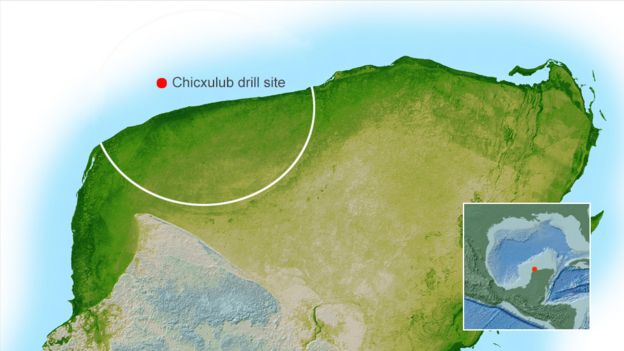The Chicxulub impactor killed off most of the dinosaurs and a lot of the life on Earth. And the effects lasted thousands, even hundreds of thousands of years. It was a bad day to be a living thing on Earth, that’s for sure.
But even a megaevent like Chicxulub didn’t wipe out all life. In the recovery, microbes flourished, plants and forests spread, and birds took over the skies.
This summer there are several more studies showing how the impact stirred the pot and led to the spread of various lifeforms.
In addition to forests and birds (and frogs) (and, of course mammals), the Chicxulub impact was followed by a radiation of snakes [4]. The researchers speculate that snakes may have survived in fresh water aquatic habitats, and adaptation for night hunting might have been an advantage in the dim years of the aftermath. Then, of course, snake, like birds and frogs, invaded the new forests that arose.
But wait! There’s more!
The Chicxulub impact dug a huge hole and shattered rocks a kilometer and more into the crust. Researchers from the International Ocean Discovery Program (IODP) and International Continental Scientific Drilling Program (ICDP) Expedition 364 report an analysis of the microbial life found in the core drilled from the impact crater [2].
The shattered rock created a range of microscopic habitats, which persist even today. As their title says, in addition to blasting surface life, the impact “continues to shape the deep subsurface biosphere at Chicxulub in the present day.” ([2], p. 1)
Another study found that the impactor infused the crater with sulfate-rich minerals, and when water rushed into the hole, created hot, sulfur rich conditions [5]. This was likely quickly occupied by thermophilic sulfate-reducing organisms, which still exist deep in the rocks.
“Thermophilic sulfate-reducing organisms that currently occur in the same rocks, now buried hundreds of meters beneath the seafloor, may be the living remnants of that ∼66 to 63 million-year-old colony of microorganisms.”
([5], p. 110)
The researchers note that the Chicxulub object likely was similar to many other impactors on Earth and throughout the solar system. This suggests that the long history of bombardment will have influenced the evolution of the deep biosphere, which exists today. Deep in the rocks, life is descended from collisions with space debris!
The researchers also note that these findings suggest that the history of life here and anywhere else would be strongly affected by this kind of repeated astronomical “tilling” of rocky planetary crusts.
Cool!
We puny humans like to talk about how the death of the dinosaurs made way for us. But it is increasingly clear that Chicxulub basically reset and reshuffled all life on Earth, and the results can still be seen today.
- Helen Briggs, Asteroid that wiped out dinosaurs shaped fortunes of snakes, in BBC News – Science & Environment, September 14, 2021. https://www.bbc.com/news/science-environment-58559735
- Charles S. Cockell, Bettina Schaefer, Cornelia Wuchter, Marco J. L. Coolen, Kliti Grice, Luzie Schnieders, Joanna V. Morgan, Sean P. S. Gulick, Axel Wittmann, Johanna Lofi, Gail L. Christeson, David A. Kring, Michael T. Whalen, Timothy J. Bralower, Gordon R. Osinski, Philippe Claeys, Pim Kaskes, Sietze J. de Graaff, Thomas Déhais, Steven Goderis, Natali Hernandez Becerra, Sophie Nixon, and Iodp-Icdp Expedition Scientists, Shaping of the Present-Day Deep Biosphere at Chicxulub by the Impact Catastrophe That Ended the Cretaceous. Frontiers in Microbiology, 12:1413, 2021. https://www.frontiersin.org/article/10.3389/fmicb.2021.668240
- Becky Ferreira, The Rock That Ended the Dinosaurs Was Much More Than a Dino Killer, in tNew York imes. 2021: New York. https://www.nytimes.com/2021/09/13/science/chicxulub-dinosaur-extinction.html
- Catherine G. Klein, Davide Pisani, Daniel J. Field, Rebecca Lakin, Matthew A. Wills, and Nicholas R. Longrich, Evolution and dispersal of snakes across the Cretaceous-Paleogene mass extinction. Nature Communications, 12 (1):5335, 2021/09/14 2021. https://doi.org/10.1038/s41467-021-25136-y
- David A. Kring, Martin J. Whitehouse, and Martin Schmieder, Microbial Sulfur Isotope Fractionation in the Chicxulub Hydrothermal System. Astrobiology, 21 (1):103-114, 2021/01/01 2020. https://doi.org/10.1089/ast.2020.2286


